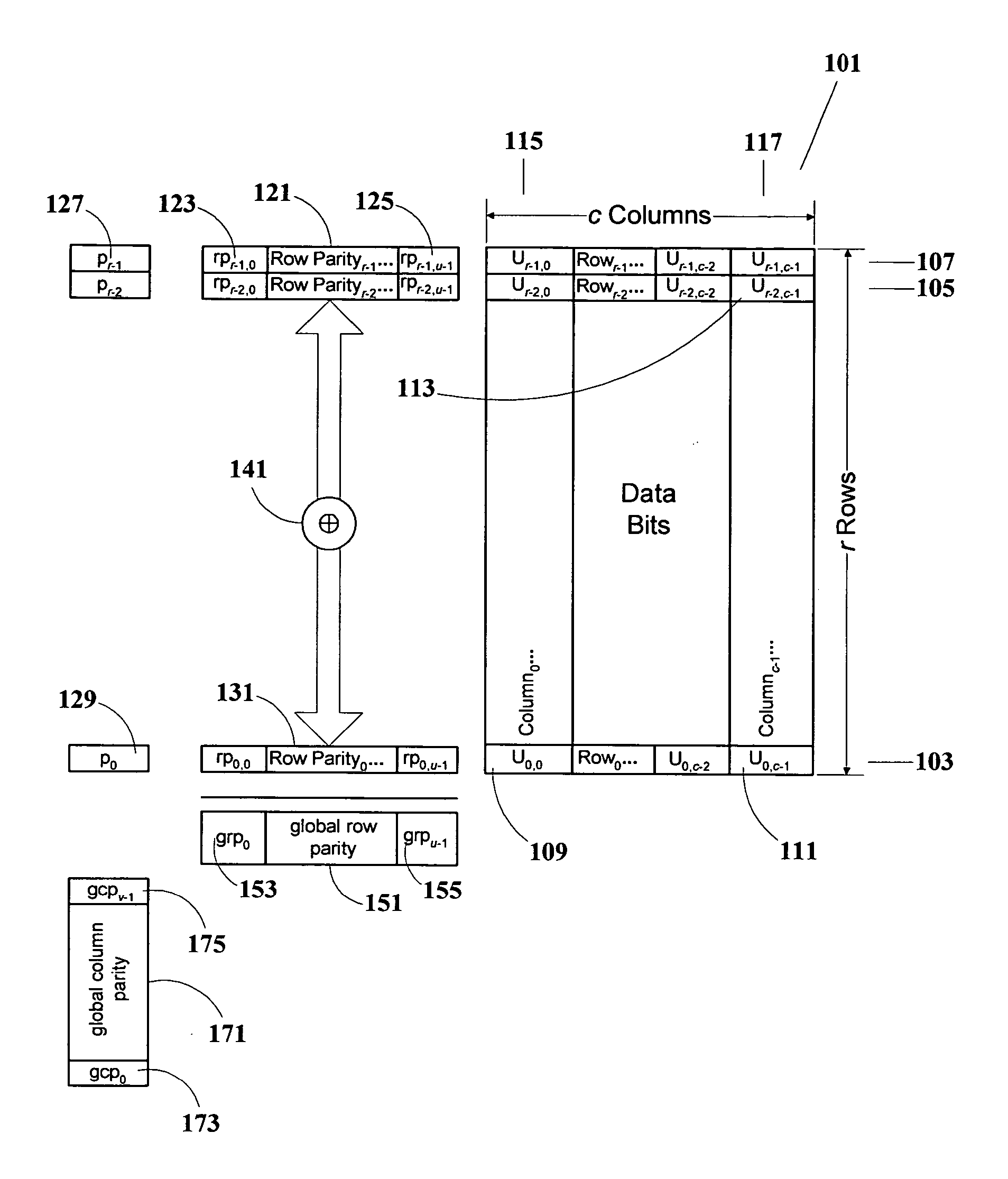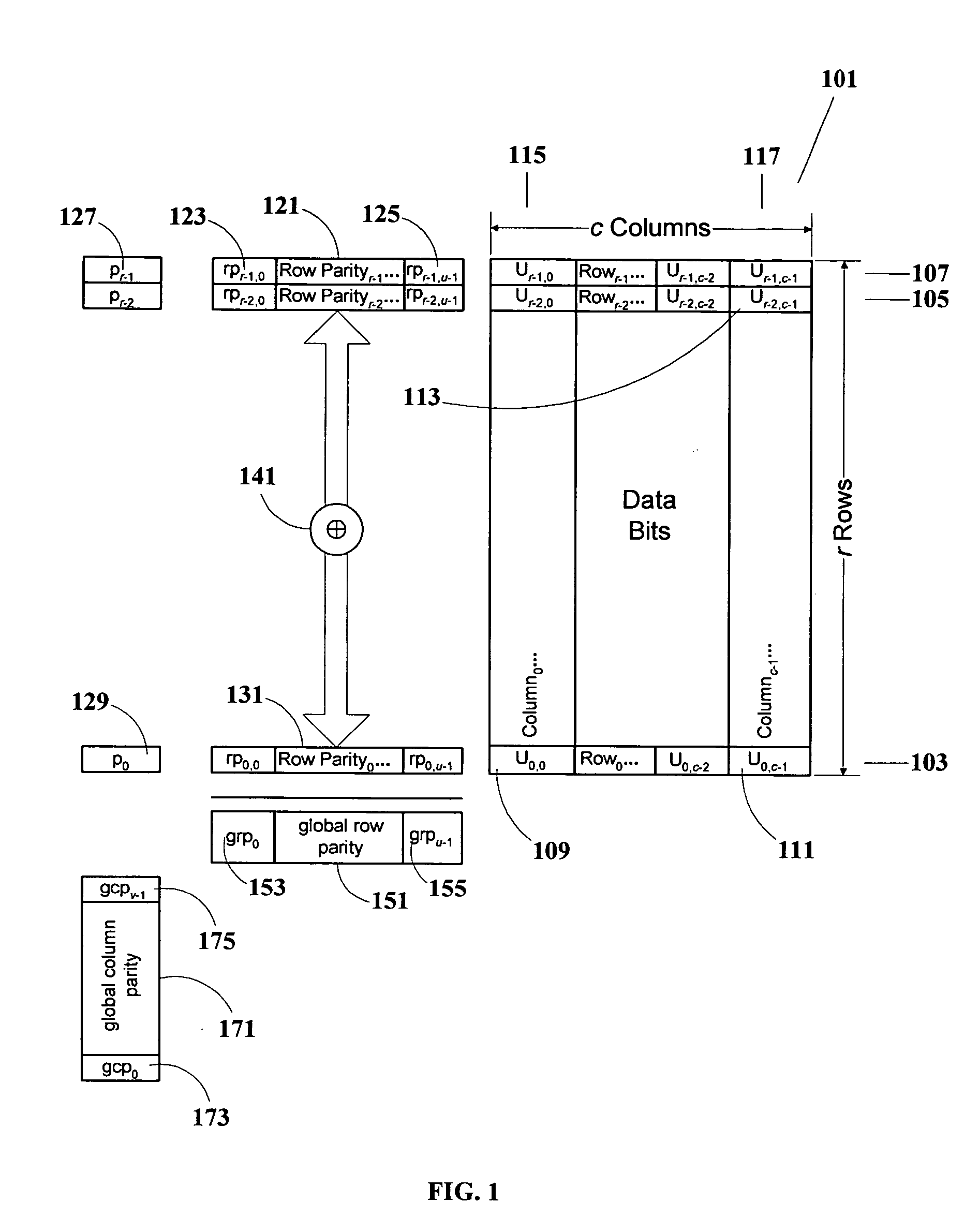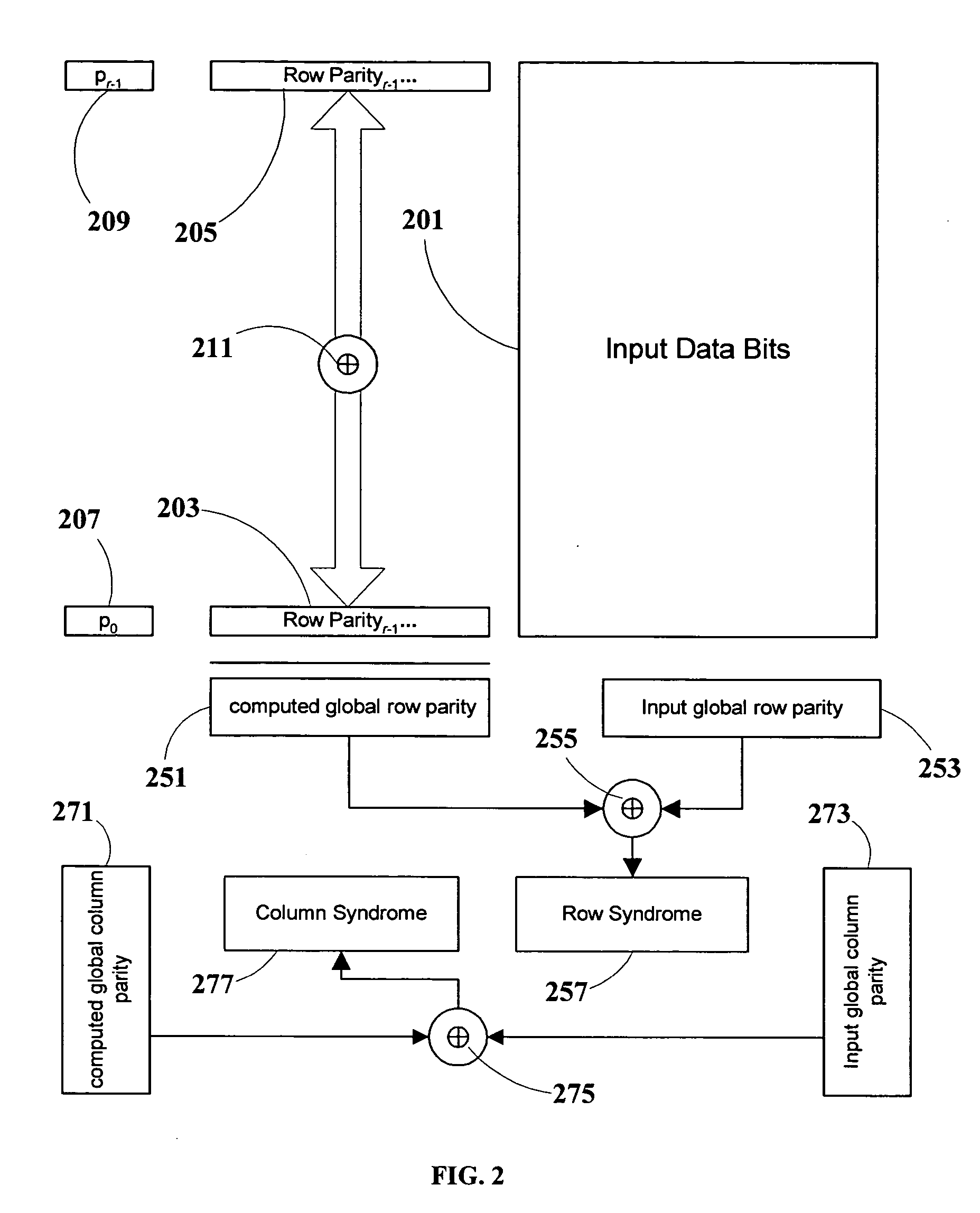Compact high-speed single-bit error-correction circuit
- Summary
- Abstract
- Description
- Claims
- Application Information
AI Technical Summary
Benefits of technology
Problems solved by technology
Method used
Image
Examples
example 1
[0068] Let the correct value of all data bits be 0 (zero). In this case, input global row parity vector 253 (FIG. 2) is 0000000, and input global column parity vector 273 (FIG. 2) is also 0000000.
[0069] Now let there be an error in bit 57110, so that bit 57110 reads as 1 instead of 0. Using the conversion rules above: [0070] bit 57110 is in row 5510 (571 div 64=8; 63−8=55) [0071] bit 57110 is in column 410 (571 mod 64=59; 63−59=4)
[0072] With the exception of row 5510, whose computed row parity vector is 1001100, all individual computed row parity vectors are 0000000. Thus, computed global row parity vector 251 (FIG. 2) is 1001100=4 Ch, which is also the value of row syndrome 257 (FIG. 2).
[0073] Using Equation (9) above, it is seen that the decoded column error location is given by:
error column location=Table 1 (4 Ch)−7=0 Bh−7=410. (11)
[0074] Next, the overall parity bits of each row will be 0 (zero) except P55, and thus computed global column parity vector 271 (FIG. 2) is 101...
example 2
[0077] In this example, arbitrary data is written and encoded, a portion of which is shown in Table 2. Note that the row and column locations as shown in Table 2 are numbered to take into account the parity vector bits. That is, the data columns are numbered starting at column 7, rather than column 0, and the data rows are numbered starting at row 7, rather than row 0. Furthermore, the data is ordered from MSB to LSB, so the bit strings of the derived row and column locations are backwards and have to reversed before using Table 1.
[0078] Also note that the data bit at column 34 and row 13 is written as a 0 (zero). This is the correct value for this data bit.
[0079] As previously described, each individual row parity vector is calculated by encoding a row of data. These individual row parity vectors are XORed together, and the result is encoded and saved as the global row parity vector. The overall parity bit is the 1 parity bit of each row, and these overall parity bits are encoded...
PUM
 Login to View More
Login to View More Abstract
Description
Claims
Application Information
 Login to View More
Login to View More - R&D
- Intellectual Property
- Life Sciences
- Materials
- Tech Scout
- Unparalleled Data Quality
- Higher Quality Content
- 60% Fewer Hallucinations
Browse by: Latest US Patents, China's latest patents, Technical Efficacy Thesaurus, Application Domain, Technology Topic, Popular Technical Reports.
© 2025 PatSnap. All rights reserved.Legal|Privacy policy|Modern Slavery Act Transparency Statement|Sitemap|About US| Contact US: help@patsnap.com



